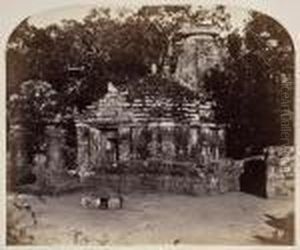Henry Dixon Paintings
Henry Dixon was a notable English photographer, born in 1820, who became famous for his work documenting the architectural heritage of London in the 19th century. He was not only a photographer but also a successful businessman, running a family printing firm. However, it is his photographic legacy that has left a lasting impression.
Dixon's most renowned project was his contribution to the 'Society for Photographing Relics of Old London', which aimed to capture images of historic buildings that were at risk of being demolished during a period of rapid urban development and modernization. This initiative was propelled by the concern that London's historical architecture was being lost to new construction. The photographs Dixon took under this project, which started in 1875 and continued into the 1880s, are considered an invaluable record of Victorian London.
Dixon's process involved the use of the wet collodion technique, which was intricate and required the photographic material to be coated, sensitized, exposed and developed within the span of about fifteen minutes, necessitating a portable darkroom. Despite the technical challenges, Dixon excelled in this method, producing images with high detail and clarity.
Henry Dixon's work was instrumental in the early movement to preserve historical structures, and his photographs helped raise public awareness about the importance of conservation. His images are not only significant as historical records but also as works of art, reflecting the skill and dedication of an early photographer who captured the spirit of a changing London.
Henry Dixon passed away in 1893, but his legacy lives on through his photographs, which continue to be appreciated by historians, architects, and art enthusiasts alike. They provide a window into the past, showcasing the architectural splendor of 19th-century London that might have otherwise been forgotten.
